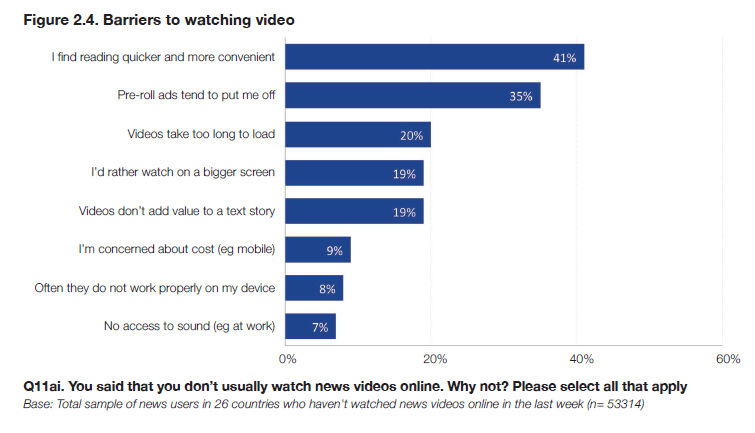We talk to a Reuters Institute researcher about finding on social video from their new report, ‘The Future of Online News Video’.
NewsWhip recently provided the Reuters Institute with data on the performance of Facebook videos from different publishers in the US and Europe. Their report, ‘The Future of Online News Video‘ makes for vital reading for anyone looking to understand the impact of social video for news publishers.
We talked to one of the report’s authors, Antonis Kalogeropoulos, about its findings. He took us through the types of videos that are proving popular with consumers, how approaches differ in different markets, and more.
You can read the full report over on the Reuters Institute website. Also see our new 30 day analysis of the New York Times and BBC News’ Live video output, where we looked at what’s working for publishers in the live format.
How would you summarise the main findings of this report?
In two sentences, I would say that the growth around online news videos seems to be largely driven by technology, platforms and news organisations and not by consumer demand.
Publishers rush in investing in online news videos because of platform pressure and high CPMs. However, we have multiple data points showing that the growth in user interest in video is slower than most news organisations expected.
One section looks at the types of video that work best on social media. From your research, what type of videos performed strongest, and did they have many common format traits?
First we saw that in the case of BBC’s coverage of Paris attacks, Facebook video was more prominent than video on the site of BBC in the first hours right after the shootings. This tells us that video in social media are important as breaking news unfold.
From data we received from NewsWhip, we conducted a content analysis of the most successful videos of the top news publishers in four countries (USA/UK/Germany/Italy) in terms of Facebook engagement numbers (likes, shares, comments).

The results showed that entertainment videos like animal, baby and cooking videos were very successful, even in the Facebook pages of hard news organisations like The Telegraph or The Guardian. In addition, we saw that emotional video attracted a lot of attention. Moreover, very few of the successful social videos were TV videos used online or raw footage videos.
Most successful videos were created for online use and to be used without sound (they were texted). Last but not least, more than half of the most successful videos were shorter than a minute long.
What did the report tell us about how consumers are accessing video natively, through Facebook or other platforms?

The findings we used from the Digital News Report survey showed that the prominence of offsite video (in Facebook and other platforms) depends on the country. In countries like Japan, Finland, Germany and the UK, users mostly watch videos on the sites of news organisations (see chart).
In the US the share of people watching videos onsite and offsite are evenly split. In Italy, Greece and Brazil videos on social networks are more prominent than onsite videos. If we look solely at users below 35 years old, we can see that offsite consumption is more prominent than in the general population.
What are the main issues around the growth of video, for both publishers and consumers?

In the report, we found that users claim that their main barrier to watching news video online is that they find text more convenient. Their second most widely cited reason for not watching online news videos is a dissatisfaction with pre-roll ads.
The technological barriers (like slow speed or small screen size) were not very prominent. This is bad news for news organisations since we cannot expect that better technology in online news video will bring large growth in video use. I also expect more and more consumers to be averse towards online news videos in the future if they are flooded with them in their news feeds and online news reading experiences.
What do you think newsrooms should be doing to make better video content for audiences?
It is very difficult to recommend a video strategy that would fit all publishers. What I could say is that every publisher should be aware of their audience’s needs and adapt their video strategy rather than push video in all directions.











